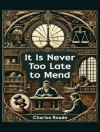In ‘Under the Skylights, ‘ Henry Blake Fuller presents a keenly observed narrative centered on the shifting dynamics of urban life in early 20th-century Chicago. The book intricately explores themes of social class, modernity, and individual aspiration through the lens of its richly drawn characters, capturing the vibrancy and complexity of city existence. Fuller’s literary style is marked by its realism and psychological depth, offering readers a reflective portrayal that connects personal experiences to larger societal structures, echoing the transition of American literature towards modernism. Henry Blake Fuller was a pivotal figure in the Chicago literary scene, known for his contributions to regionalism and for addressing the concerns of urban life in his works. Drawing from his own experiences of navigating the evolving societal landscape of Chicago, Fuller articulates the tensions and nuances of human interaction amidst the city’s architectural and cultural transformations. His perspective is informed by his involvement with the Chicago literary renaissance and his interactions with key figures in the literary community, which shaped his artistic vision. ‘Under the Skylights’ is a compelling read for anyone interested in the complexities of urban existence and the evolving American identity. Fuller’s timeless exploration captures the essence of human experience against the backdrop of a burgeoning metropolis, making it an essential addition to the canon of American literature.
A propos de l’auteur
Henry Blake Fuller (1857-1929) was an American author and a significant figure in the literary renaissance of Chicago during the late 19th and early 20th centuries. Fuller was known for his realistic and sometimes satirical portrayals of middle-class life and social issues, characteristic of the Chicago literary movement. Fuller’s early works were predominantly travel literature, but he achieved critical success with his social novels, including ‘The Cliff-Dwellers’ (1893), which is often cited as one of the first American urban naturalistic novels, set against the backdrop of the rapidly industrializing Chicago. ‘Under the Skylights’ (1901), another notable work, shifts focus to the artistic and literary circles of Chicago, showcasing the challenges faced by individuals in the burgeoning Midwestern metropolis. Fuller’s literary style is noted for its incisive observations and clear, straightforward prose. His work often reflects the dichotomies of American society at the turn of the century, juxtaposing the provincialism of the Midwestern United States with the cosmopolitan nature of its urban centers. Fuller’s contributions to American literature are perhaps best understood through the lens of the Chicago Renaissance, in which he played a prominent role alongside contemporaries such as Theodore Dreiser and Edgar Lee Masters. Fuller’s legacy lies in his exploration of personal identity and social structures through the medium of fiction, which continues to be appreciated for its historical and cultural significance in the American literary canon.












